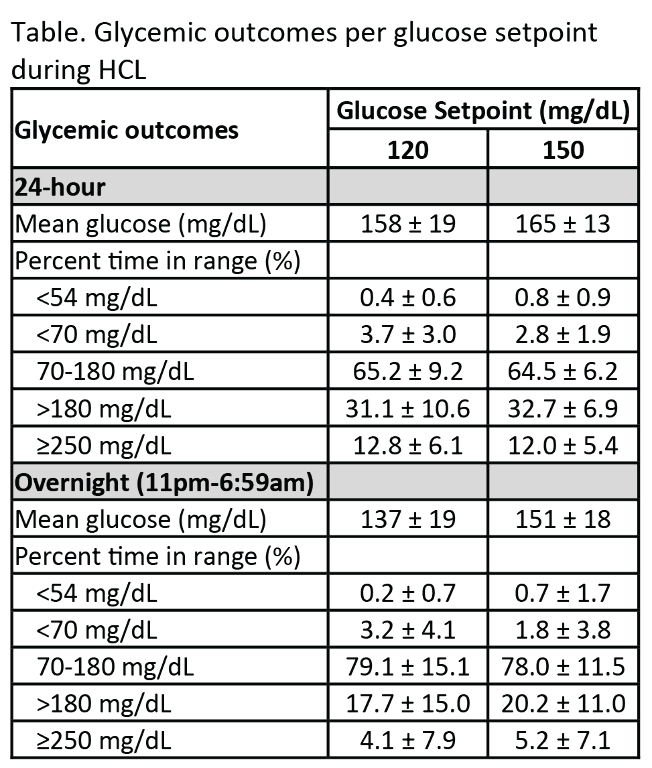PERFORMANCE OF OMNIPOD PERSONALIZED MODEL PREDICTIVE CONTROL ALGORITHM WITH MULTIPLE SETPOINTS AND MEAL AND EXERCISE CHALLENGES IN CHILDREN AGED 2-12 YEARS WITH TYPE 1 DIABETES
- Jennifer Sherr, United States of America
- Jennifer Sherr, United States of America
- Bruce A. Buckingham, United States of America
- Gregory P. Forlenza, United States of America
- Alfonso Galderisi, United States of America
- Laya Ekhlaspour, United States of America
- R. Paul Wadwa, United States of America
- Melinda Zgorski, United States of America
- Ryan Kingman, United States of America
- Cari Berget, United States of America
- Joon Bok Lee, United States of America
- Jason O’connor, United States of America
- Bonnie Dumais, United States of America
- Todd Vienneau, United States of America
- Lauren Huyett, United States of America
- Trang Ly, United States of America
Abstract
Background and Aims
The Omnipod hybrid closed-loop (HCL) personalized model predictive control (MPC) algorithm was assessed in children aged 2-12y with type 1 diabetes (T1D) using an investigational device. This study provided the first evaluation at multiple glucose setpoints and with missed meal boluses in this age group.
Methods
Participants aged 2-12y with T1D and A1C<10.0% using CSII or MDI were eligible for a 72-96-h HCL study conducted in a supervised free-living hotel setting. At HCL start, the glucose setpoint was 150mg/dL, and at 24-48h it was lowered to 120mg/dL. The system was stress-tested with 1-2 missed lunch boluses, high fat dinners, and daily moderate-intensity exercise. Endpoints were mean glucose and percentage time <54, <70, 70-180, >180, and ≥250mg/dL at each setpoint.
Results
Participants (n=9) were (mean±SD): age 7.1±2.2y, T1D duration 3.0±1.6y, and A1C 7.6±1.0%. Glycemic outcomes at each setpoint are reported in the Table. Despite stress-testing the system with missed meal bolus challenges (20-75g carbohydrate) and exercise, percentage time in target range (TIR) from 70-180 mg/dL was ~65% regardless of the system setpoint. Mean glucose was 158±19mg/dL and 165±13mg/dL at the 120mg/dL and 150mg/dL setpoints, respectively.
Conclusions
The Omnipod personalized MPC algorithm performed well and was safe for up to 5 days of use in children aged 2-12y with T1D when stress-tested at 2 different setpoints under challenging conditions. With recent consensus guidelines recommending TIR >60% for youth, our data demonstrate the feasibility of attaining this goal despite the challenges imposed in this trial.
